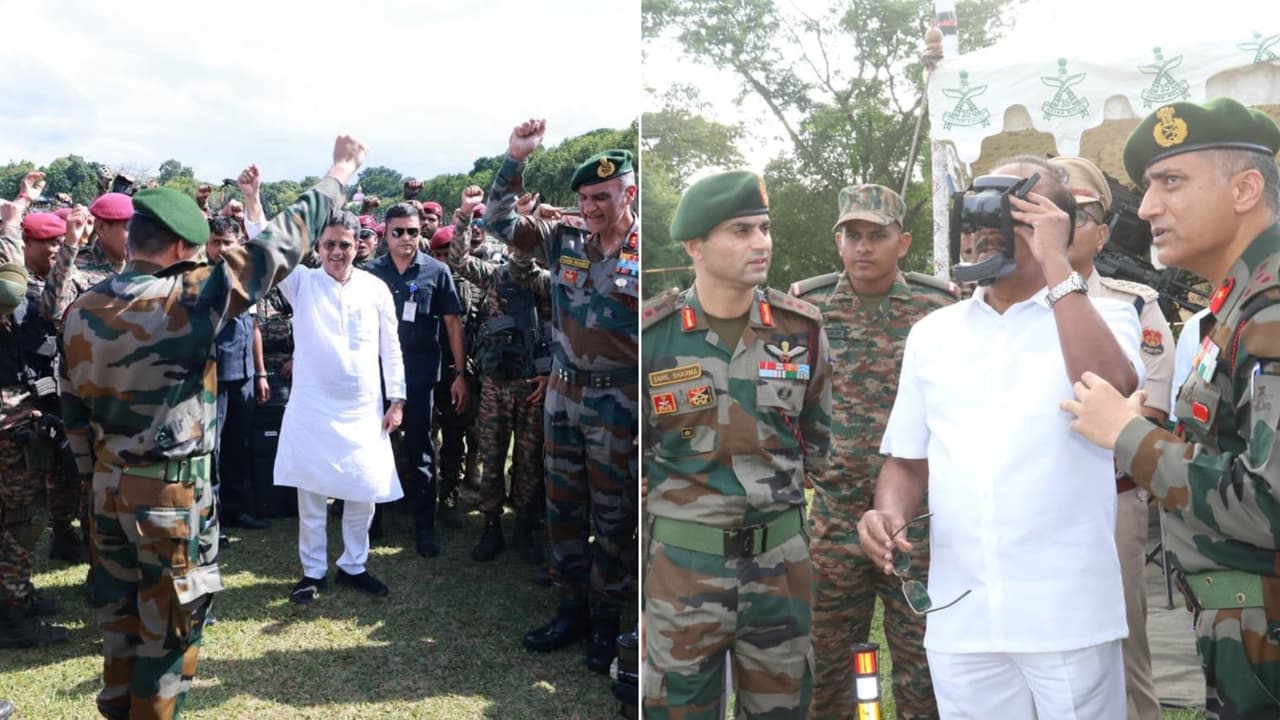Agartala hosted a high-level Indian Army drone drill, highlighting its historic role in the 1971 Liberation War and its geographic importance near Bangladesh and the Siliguri Corridor, reaffirming Tripura’s place in India’s evolving strategic vision.
New Delhi: When the top brass of the Indian Army from across the northeastern states descended on Agartala – a modest garrison town better known for its quiet strategic relevance than for hosting headline-making military congregations – it raised more than a few eyebrows. Normally, such high-level conferences and exercises are reserved for larger headquarters in Shillong, Guwahati, or Kolkata. Why then Agartala?
The answer lies not only in present-day geopolitics but also in history, memory, and symbolism.
Agartala: A City with War-Time Legacy
Few outside the region remember that Agartala was once dubbed the “War Capital of Bangladesh” during the 1971 Liberation War.
From here, India’s military and intelligence apparatus coordinated operations, trained Mukti Bahini fighters, and sheltered thousands of refugees. The liberation of Dhaka had roots in the planning that happened in this very city.
Go back even further, and one encounters the Agartala Conspiracy Case of 1968, when Sheikh Mujibur Rahman was accused by Pakistan of plotting secession with Indian support, allegedly meeting conspirators in Agartala. Whether fact or fabrication, the episode etched Agartala into the Bangladeshi nationalist imagination.
Holding a cutting-edge drone exercise here therefore carries layers of symbolism – it is a reminder of Tripura’s centrality in the subcontinent’s unfinished history.
A Message in Geography
Geography adds weight to the choice. Agartala sits close to Chittagong in Bangladesh and not far from India’s vulnerable Siliguri Corridor – the narrow “chicken’s neck” that connects the Northeast to the rest of India.
By showcasing military modernisation and readiness in Agartala, the Army underlined that India is alive to the vulnerabilities of this arc. Drones, with their surveillance reach, give India sharper eyes and faster responses in precisely these sensitive sectors.
Faith and Frontlines
The exercise also reflected the faith of Tripura’s people in the Assam Rifles, who remain both guardians of the border and trusted partners in civil life. That faith is important because security in this region is not only about armies and technology – it is also about relationships, confidence, and morale.
Why Now, Why Here?
Seen together, the congregation of senior commanders, the presence of political leadership, and the choice of Agartala all send layered signals. They assert that Tripura is no longer a quiet frontier – it is a forward post of India’s Act East vision, a sentinel against instability in Bangladesh, and a watchtower over the Siliguri–Chittagong arc.
In a world where military exercises often blur into routine, this one stood out because of where it was held and what it evoked.
Agartala’s drone drill was not only about unmanned systems and preparedness. It was also about history whispering to the present: that this small garrison town remains a stage for big strategic plays.
